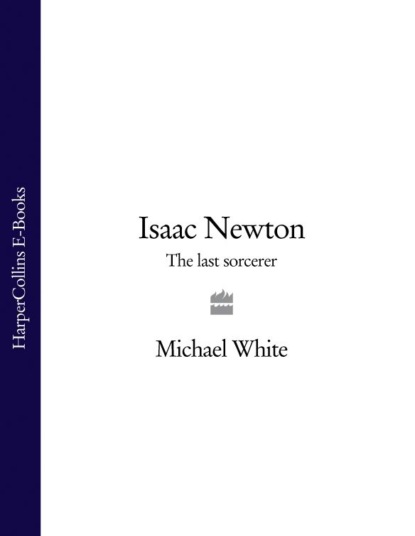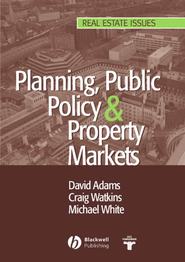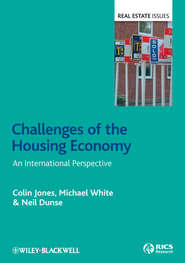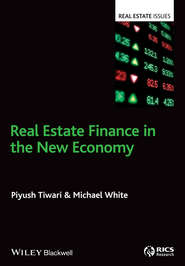По всем вопросам обращайтесь на: info@litportal.ru
(©) 2003-2024.
✖
Isaac Newton: The Last Sorcerer
Настройки чтения
Размер шрифта
Высота строк
Поля
Throughout the summer and autumn of 1664 Newton conducted further experiments and observed diffraction through feathers and different fabrics held up to the light: ‘A feather or a black riband put between my eye and the setting Sun makes glorious colours,’ he observed.
(#litres_trial_promo) But then his fervour for experiment seemed to take him over. Within days he performed two experiments that left him almost totally blind.
The first near-catastrophe was when he looked directly at the Sun for too long, with the intention of observing coloured rings and spots before the eyes – a practice he repeated over and over again. In a letter to his friend the political philosopher John Locke, written a quarter of a century later, in 1691, he describes the experience:
I looked a very little while upon the Sun in a looking glass with my right eye and then turned my eyes into a dark corner of my chamber & winked to observe the impression made & the circles of colours which encompassed it & how they decayed by degrees & at last vanished … And now in a few hours’ time I had brought my eyes to such a pass that I could look upon no bright object … but I saw the Sun before me, so that I could neither write nor read but to recover the use of my eyes shut myself up in my chamber made dark for three days together & used all means to direct my imagination from the Sun.
(#litres_trial_promo)
This mishap could be put down to Newton’s ignorance of the true danger involved, but what is the explanation for the following experiment?
I took a bodkin [from the illustration accompanying this entry in the notebook, astonishingly, this appears to be a small dagger similar to an envelope knife], and put it between my eye and the bone as near to the backside of my eye as I could: & pressing my eye with the end of it (so as to make the curvature in my eye) there appeared several white, dark and coloured circles. Which circles were plainest when I continued to rub my eye with the point of the bodkin, but if I held my eye and the bodkin still though I continued to press my eye with it yet the circles would grow faint often disappear until I resumed them by moving my eye or the bodkin.
(#litres_trial_promo)
Youthful enthusiasm and dedication are one thing, but most people would agree that sticking a blade into one’s own eye goes far beyond the call of duty. As a result, by nearly causing permanent blindness, he came close to destroying his scientific career almost before it had begun.
In spite of these set-backs, Newton was learning rapidly from his experiments. The synthesis of Baconian method, innate talent and theoretical rigour was almost complete, but one crucial element was still missing.
There is general disagreement regarding the timing and even the exact method by which Newton acquired the mathematical knowledge that transformed his approach. No mathematics appear in the Philosophical Notebook, but early in 1664, and before his optical experiments, he began to make mathematical notes in what he called the ‘Waste Book’, the barely used notebook of his stepfather, Barnabas Smith.
(#litres_trial_promo) By late that summer he was already familiar with the most complex mathematical ideas of the times, gleaned largely from major texts of the period, including John Wallis’s Arithmetica Infinitorum (1655) and Descartes’s Geometry.
(#litres_trial_promo)
Until his entry into Cambridge University, Newton’s mathematical knowledge had been limited to simple arithmetic, perhaps some algebra and a little trigonometry. But it is a mark of his genius that during the course of only two years he taught himself advanced mathematics and developed the calculus.
From letters and a collection of private papers which a few privileged disciples were allowed to rake through towards the end of his life, it is clear that Newton approached mathematics with the same autodidactic fervour he had shown as an adolescent pursuing his quest for knowledge at the Clarks’ home. But this time, in his enthusiasm, he skipped the fundamentals. The French mathematician Abraham Demoivre made the most intense study of Newton’s earliest mathematical work, and in a memorandum he wrote in 1727 he gives us an account of Newton’s stumbling, maverick approach:
In ’63 [Newton] being at Stourbridge fair brought a book of astrology to see what there was in it. Read it ‘til he came to a figure of the heavens which he could not understand for want of being acquainted with trigonometry. Bought a book of trigonometry, but was not able to understand the demonstrations. Got Euclid to fit himself for understanding the ground of trigonometry. Read only the titles of the propositions, which he found so easy to understand that he wondered how anybody would amuse themselves to write any demonstrations of them.
(#litres_trial_promo)
Whether or not Newton had any official help with mathematics towards the end of his second year at Cambridge is difficult to ascertain. In March 1664 Isaac Barrow began a series of mathematical lectures as part of his duties as the first Lucasian Professor – a position he had accepted that winter. We know that Barrow and Newton were acquainted closely a few years after this, and that Barrow surrendered his chair to Newton in 1669, but it is by no means certain that Newton attended Barrow’s mathematics lectures. According to statutes laid down by the King, these lectures were for fellow-commoners only. This may have prevented Newton; however, such rules were flaunted openly and, being the sort of student he was, Newton may have worked his way in despite his lowly social position within the university.
For the future advancement of science, his efforts at teaching himself advanced mathematics were of the utmost significance. Without an understanding of algebra, Newton could not have developed the calculus, and without that he could not have manipulated and communicated his physics – calculus provided the formal structure needed to turn his notions of gravity from concept to hard science.
In 1664 such grand designs were some way ahead; more pressing were the demands of the university. Although he had been working consistently hard, his efforts had been exerted almost entirely outside the curriculum. Like Darwin, Einstein, Hawking and many other great scientists after him, Newton found himself ill-prepared for the various exams he needed to pass in order to continue as a student.
Having realised that his charge was more interested in mathematics and the latest philosophical ideas from Europe than in the official curriculum, Newton’s tutor, Benjamin Pulleyn, referred him to Isaac Barrow for his scholarship appraisal. Newton was required to pass an examination in April 1664 which would make him an undergraduate scholar, allowing him to sit for his BA the following spring. Pulleyn presumed that Barrow would be the most useful fellow to access the young man’s talents. Unfortunately, Barrow decided to quiz Newton on Euclid. This could have spelled disaster, because Newton had paid little attention to simple Euclidean theorems en route to more advanced mathematics. Conduitt tells us:
When he stood to be scholar of the house his tutor sent him to Dr Barrow then mathematical professor to be examined, the Dr examined him in Euclid which Sir I. had neglected and knew little or nothing of, never asked him about Descartes’ Geometry which he was master of. Sir I. was too modest to mention it himself & Dr Barrow could not imagine that one could have read the book without first [being] master of Euclid, so that Dr Barrow conceived then but an indifferent opinion of him but however he was made scholar of the house.
(#litres_trial_promo)
Having been made aware of his deficiency, true to form, Newton immediately went back to the basics of mathematics and quickly absorbed Euclidean geometry and simple algebraic theorems. His dedication is evident from the fact that the most dog-eared and tatty book in Newton’s library was Euclidis Elementorum by Isaac Barrow.
Newton may have made up for his mistakes, but, viewing the situation dispassionately, it is clear that he must have received help in convincing the fellows of his true worth. If the interview with Barrow had indeed gone as badly as Conduitt reported, it must have created a poor initial impression and Newton’s supporters must have brought their influence to bear in order to salvage the young man’s career. Humphrey Babington was rising high in the college hierarchy (becoming a senior fellow in 1667), and he enjoyed the King’s favour. The well-documented fact that Newton visited him frequently during the plague years spent in Woolsthorpe shows that the two men remained in contact throughout Newton’s early years in Cambridge. Having helped to get him into Trinity, Babington would not have wanted him to flunk his scholarship. He almost certainly realised the young man’s potential and may have appreciated his disenchantment with the outdated university curriculum.
Even though he brushed up his Euclid, Newton clearly did little in the way of formal study for the BA examinations the following spring. As a result, he did graduate – but in an undistinguished manner. According to Stukeley, ‘when Sir Is. stood for his Bachelor of Arts degree, he was put in second posing, or lost his groats, as they call it,
(#litres_trial_promo) which is looked upon as disgraceful’.
(#litres_trial_promo)
In a larger historical perspective, the fact that in the spring of 1665 Newton graduated with a mere second-class BA is laughable, but in the pantheon of scientific greats this is not so unusual. Robert Darwin had to remove his son Charles from medical studies in Edinburgh because it was clear he would make nothing of his time there; Albert Einstein scraped through his degree and then found it almost impossible to find a job; and Stephen Hawking, who was unpopular with the Oxford University authorities because he spent more time on the river than in lecture theatres, was awarded a first only to ensure that he did his PhD in Cambridge. But, for the twenty-two-year-old Newton, graduation, whatever the grade, was enough to secure his future at the university. Setting an example for his scientific heirs, he had long since decided that his vocation was to unravel the laws governing God’s universe; passing exams was merely a means to an end and was conducted with the minimum of effort. He now had official sanction to pursue his true goal, but even he, with the arrogance of youth and a single-minded determination, could not have realised just how soon would come his first successes en route to his dream.
Chapter 4 Astronomy and Mathematics Before Newton (#ulink_59383021-58f1-51ed-9e4b-a7fd469dad5e)
In every piece there is a number – maybe several numbers, but if so there is also a base-number, and that is the true one. That is something that affects us all, and links us all together.
ARVO PÄART (composer)
(#litres_trial_promo)
Number and pattern have always held a fascination, and the true origins of mathematics and astronomy are certainly ancient. The earliest form of organised mathematics, in which numbers were meaningfully manipulated and patterns recorded, is credited to the Babylonians of around 4000 BC, who recorded star patterns and named constellations. They had also developed a surprisingly advanced set of mathematical rules, including a sophisticated method of counting – a skill employed by the record-keeper, the farmer and the architect. It is thought that the last of these professions may also have employed simple forms of algebra and geometry.
Modern research, such as John North’s work on ancient stone circles, has demonstrated that the ancient Britons must also have possessed some knowledge of geometry in order to build such structures as Stonehenge, started about 3500 BC,
(#litres_trial_promo) and the ancient Egyptians had highly developed mathematical and engineering skills which they employed in the building of the Great Pyramid at Giza some 1,000 years later. In these ancient civilisations, mathematics and astronomy were blended together intimately and had rich associations with mysticism and the occult. Astronomy and astrology were viewed as one and the same, and mathematics gained an almost spiritual status as a tool for the astrologer/astronomer. It was not until Greek times that mathematics and, to a lesser extent, astronomy were separated from religion and considered worthy of academic attention. While maintaining their spiritual associations, they then gradually became subjects for pure analysis and reasoning.
All mathematics may be viewed as composed of three central subjects: arithmetic, geometry and algebra. As the most immediately useful to a wide range of crafts and professions, arithmetic was the earliest form of mathematics to be developed, and grew to include all forms of number manipulation.
In its simplest form geometry deals with the shapes of things, in either two or three dimensions (although modern mathematicians also deal with multidimensional space – a study still called geometry). This area of mathematics found ready use with the architect and the builder. For the astronomer it was an invaluable tool in the search for patterns in the stars, which in turn fuelled the development of astrology.
Algebra, which was only scantily formulated before the early seventeenth century, is a language in which symbols are assigned to properties of objects. It enables mathematicians to construct equations that describe a situation or the interplay between properties (either real or imaginary) using strict rules that govern what may be done with representative symbols. A simple example would be the equation s = d/t. In words this would be ‘Speed equals distance travelled divided by time taken’. Further examples would include equations used to find the rate at which water flows through a pipe, how quickly a rocket accelerates from the launch pad, or how efficiently a muscle uses energy from glucose.
Arithmetic and geometry may be considered more everyday than algebra, in that they represent the world and the things we observe directly. Algebra is one level of abstraction away from reality, because symbols are used to represent properties, rather than being actual measurements of things. This distinction could account for the fact that arithmetic and geometry were developed into sophisticated tools and used widely very much earlier than algebra.
The Greeks viewed mathematics in a different way to the civilisations that predated them, in that they appear to have been the first to consider pure mathematics – to contemplate mathematical abstractions, rather than using mathematics solely as a tool for constructing religious structures or to develop the mystical arts. Using mathematical skills, the Greeks were able to develop elaborate theories to describe the structure of the observable universe and to postulate ways in which the planets, the Sun and the stars could be arranged in the heavens.
According to most accounts, Anaximander, who lived between 610 and 545 BC, is thought to be responsible for the first development of what became the geocentric view of the universe – the concept that the Earth lies at the centre of the universe. Before then, the Earth was believed to be a floor with a solid base of limitless depth.
(#litres_trial_promo)
Anaximander reached his conclusions by astronomical observation, believing that the visible sky was a dome or half of a complete sphere. But it was not until the fourth century BC, when Greek explorers began to travel further afield, that this idea began to be widely accepted. An indication of the rapid progress that was made during this period is that by the third century BC, around 300 years after Anaximander, Greek astronomy had progressed to the point where Eratosthenes, a contemporary of Archimedes, was able to estimate the circumference of the Earth, putting it at 24,000 miles (only 800 miles short of the modern measurement). He was also able to calculate the distance between the Earth and the Sun, assigning it a figure of 92 million miles (a little over 1 per cent out from the modern value of 93 million miles).
This progress in astronomical knowledge was due largely to the development of geometry between the lifetimes of Anaximander and Eratosthenes. Many advances derived from a strong need for practical mathematical tools for use by land surveyors and farmers – ‘rules of thumb’ and practical guidelines. Such developments helped philosophers and mathematicians to derive axioms and general principles that led to further discoveries. The first great mathematician to work in this way was Pythagoras, a man most people remember from school maths lessons as the creator of a theorem concerning rightangled triangles.
In fact Pythagoras, who was born at Samos shortly after Anaximander’s death, derived much more than a single geometric relationship: he was the most important figure in formulating the whole basis of pure mathematics. His school was pseudo-mystical, in that he and his followers believed that the universe had been designed around hidden numeric relations and that its entire structure and the complex interplay of the four elements (later popularised by Aristotle) were governed by mathematical patterns. He and his followers discovered the mathematical relationship between sounds, using vibrating strings, and originated the concept of the ‘music of the spheres’ – the idea that the ratios observed between notes on the musical scale could be mirrored in the distances of the planets from the Earth.
(#litres_trial_promo)
Fortunately, many of Pythagoras’s ideas were preserved by another great mathematician, who lived two centuries later, Euclid of Alexandria – the man most commonly perceived as the father of modern geometry. Although Euclid was an original thinker and added much to the knowledge of geometry, his greatest contribution was to collect earlier work, especially that of the Pythagorean school, and to rationalise it into a collection of books he produced around 300 BC. These have survived to the present day and formed the basis of all geometry until the middle of the last century. So fundamental is this work to our understanding of mathematics that the three-dimensional space in which we perceive the universe is known as ‘Euclidean’ space, and it was only during the nineteenth century that mathematicians began to speculate about the possibility of non-Euclidean space – geometry which did not adhere to Euclidean rules.
(#litres_trial_promo)
Astronomy and mathematics developed little between the waning of Greek culture and the domination of the Arabic intellectual system which began to emerge during the second half of the first millennium AD. The exceptional name from this era is the Alexandrian Ptolemy (c. AD 100–170), who codified the geocentric theory, a concept that remained at the heart of astronomical thinking until the sixteenth century.









